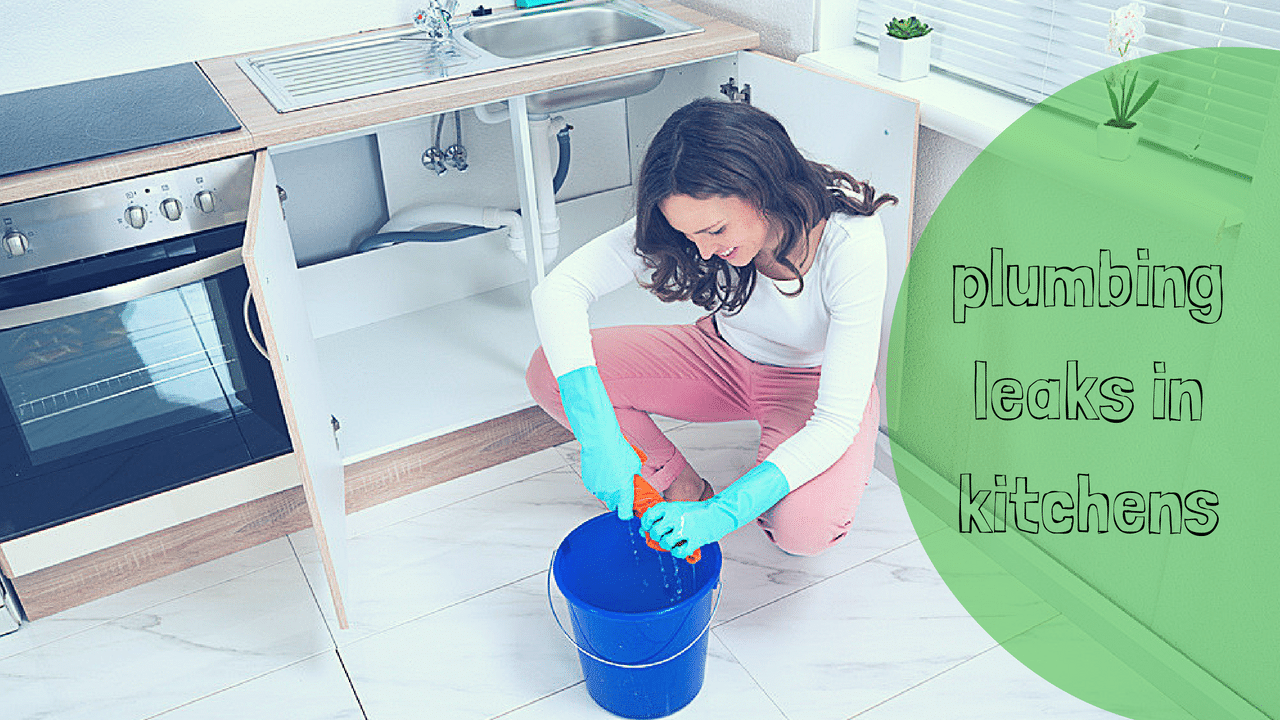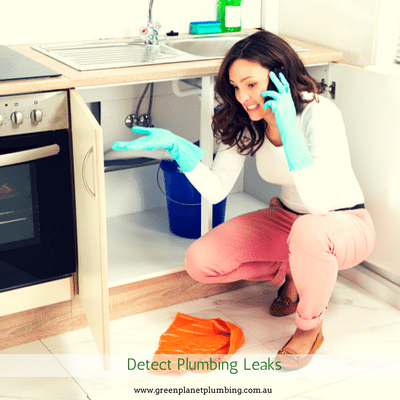Leaks can occur anywhere in your house – under the ground, behind walls, in ceilings, and every pipe you can see with your eyes. Even small leaks can cause significant damage to your property, leading to rot, flooding, and decay. Ignoring a leak can result in a bigger problem, which is why it is essential to detect plumbing leaks as soon as possible. Here are some easy methods to help you detect leaks in your house.

1. Kitchen Leaks
The kitchen is one of the most common places to experience leaks. Plumbing leaks in kitchens usually occur around the sinks and among the supply pipes at the base of the sinks. Here’s how to detect them:
- Examine the lower part of the countertop for any changes in the particleboard. If it’s dark, swollen, and spongy to the touch, it has likely been affected by water.
- Pour water slowly along the base of the faucet and the edges of the sink to check if it drips down at the bottom. This is a sign that water is readily seeping through a tiny space between the faucet base and the countertop or sink.
- Check the faucet base to see if it is loose. Constant exposure to water can gradually loosen the joint at which the faucet meets the countertop, allowing for seeping of small amounts of water to the area below.
- Examine the area under the cabinet for dampness, water puddles, and rotting floorboards, all of which are likely as the dripping continues. This is mainly due to leaks from the supply pipes inside the cabinet.
- Check for wet or dried stains on the ceiling below the kitchen. After dripping non-stop for a long time, water seeps through the floor joists and makes its way onto the ceiling board, appearing as a wet mark that may grow into a large puddle.
- To test your supply/drain pipes, pass a dry cloth over the edge of each pipe, especially around the slip joint and shutoff valve, as water drains from the sink bowl. Areas having a leak will leave small marks on the cloth.
2. Toilet Leaks
Toilets are one of the commonest sources of plumbing leaks globally. They are particularly prone to causing destruction through leaks since they are constructed on higher floors and subsequently connected to waste pipes. Here’s how to detect a pipe leak in a toilet system:
- Add a few drops of food coloring to the water tank above the toilet. Without flushing, wait for some time and watch closely for any change in the toilet water. If the food coloring makes its way into the toilet tank, it’s a sign that there is water leaking somewhere between the tank and the toilet.
- Examine the base of the toilet seat to see whether it’s loose. The base is where the toilet meets the floor and is one of the commonest sources of leaks in any house. You can try sitting on the toilet to feel for any signs of movement.
- Check the ceiling directly below the toilet for any wet or drain stains. For confirmation of source, you should also measure the distance from the stain to the toilet.
3. Bathroom Leaks
Bathroom leaks can cause significant damage to your home if not detected early. Here’s how to detect them:
- Check for peeling paint and wallpaper both on the inside and outside walls next to the bathroom. This is usually a result of a continuous passage of water though the caulk between the tiles, especially for bathtubs attached to the wall on any side.
- Look out for loose or falling wall tiles on the wall next to the shower/bathroom. Loose tiles on the wall attached to the bathtub can develop because of water seepage.
- Check for constant mold growth in certain spots of the bathroom. Mold thrives in damp and moist environments, making it a common sign of water leaks. Listen for dripping or running water sounds inside the bathroom or behind the walls. Even if you don’t see any visible signs of water damage, you may hear water leaking or running behind the walls, which is a sign that you need to investigate further.
- Inspect the baseboards and flooring next to the bathroom. Water leaks can cause damage to the baseboards and flooring near the bathroom, including warping or discoloration. Check for a musty odor in the bathroom or nearby rooms. This is a sign of mold growth and could be caused by a water leak.
4. Outdoor Plumbing
Outdoor plumbing is just as susceptible to leaks as indoor plumbing, if not more so due to exposure to harsh weather conditions. Here are a few ways to detect outdoor plumbing leaks:
- Inspect the water meter for unusual activity when you are not using any water in the house. If the meter is still running, it’s a sign that there is a leak somewhere in your outdoor plumbing system.
- Check your lawn for wet spots or areas with unexplained luscious greenery. These could indicate underground leaks in the sprinkler system or other pipes.
- Check hoses and faucets for drips or leaks. Even small drips can lead to significant water waste over time and can also damage your outdoor fixtures.
5. Using Leak Detection Devices
If you suspect a leak but can’t locate it through visual inspection, consider using a leak detection device. These devices use sound, infrared, or other technologies to detect leaks even when they are hidden behind walls or underground.
Some common leak detection devices include:
- Acoustic leak detectors: These devices use sound to identify the location of leaks in pipes.
- Infrared cameras: These cameras can detect changes in temperature caused by leaks in pipes or other areas.
- Moisture meters: These devices measure the level of moisture in walls, ceilings, and floors to detect hidden leaks.
Conclusion
Detecting plumbing leaks early is crucial in preventing costly damage to your home. By using the methods described above, you can identify and fix leaks before they cause serious problems. If you’re unable to locate a leak on your own, consider contacting a professional plumber who can help you find and repair the leak quickly and efficiently.

